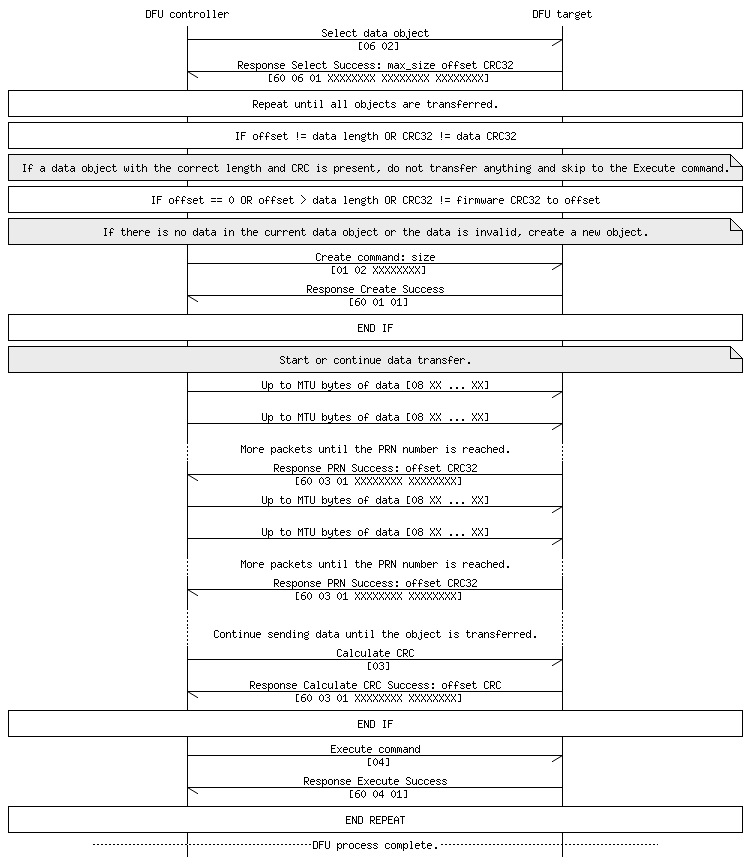Greetings,
I have an application where the DFU of a NRF52 is performed by another microcontroller via a serial port. Once the DFU is complete, the microcontroller turns off the entire system (including the NRF52). The issue I am encountering is associated with the steps performed by the bootloader after the complete application binary has been received.
I’ve noticed that the “nrf_dfu_postvalidate” step can take up to 10s. In the past I’ve waited until I have received a ping response back from the bootloader. This gave me some success. I have also tried a simple blocking delay of 15s after the DFU, but I do not like this approach. If the main microcontroller turns off the NRF52 before the DFU post-validate step is complete, the next time the NRF52 starts it stays in the bootloader mode. This means I have to perform the DFU process twice each time I wish to upgrade the NRF52 firmware.
Is there a way with the existing implemented SLIP OP codes to get confirmation from the bootloader that the new application has been validated and set to run next time it boots?
Note: I’m using SDK13 and the secure serial bootloader with slight modifications (UART without flow control, different pin mappings, WDT reset during DFU… etc). The application image I am updating is also large (120kB).



